Airships: A Short brief of History and Innovations
Airships are lighter-than-air craft or vehicle. Nearly 200 years ago, men first floated into the air in cloth balloons. The passengers rode in a basket tied to the ends of a net placed over the top of the balloon. These early airships were first filled with hot air and later with a gas called hydrogen. As these balloons rose into the air, they were at the mercy of the winds and could not be steered.
Earliest balloons
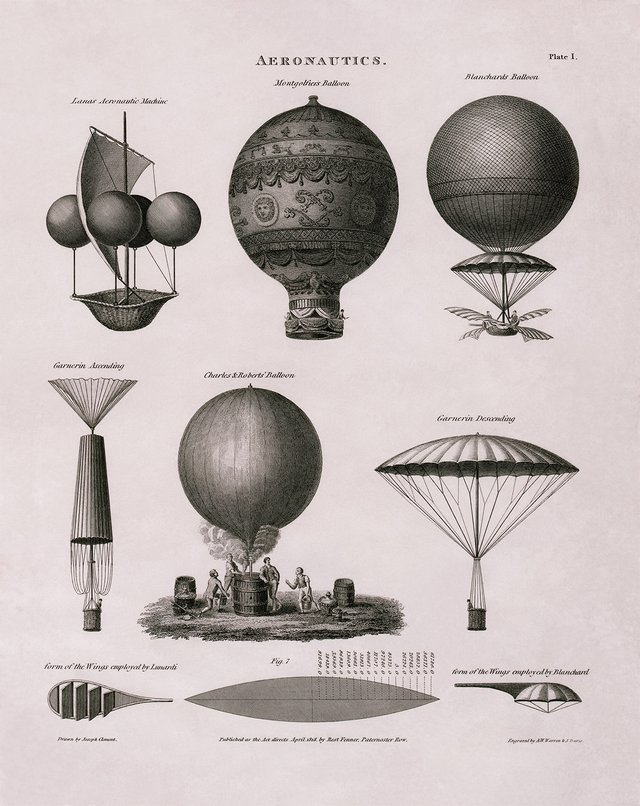
img source
The first controllable balloon or dirigible was flown a distance of 17 miles in 1852 by a French clockmaker. It carried a small three horsepower steam engine connected to a propeller. Soon many men were building dirigibles. Perhaps the most famous was Count von Zeppelin of Germany, who built his first airship 1898. He was later honored by having the German dirigibles named Zeppelins. The largest Zeppelin, the Hindenberg, was 803 feet long. It was propelled at a speed of 85 miles per hour by four powerful diesel engines.
The first controllable balloon or dirigible
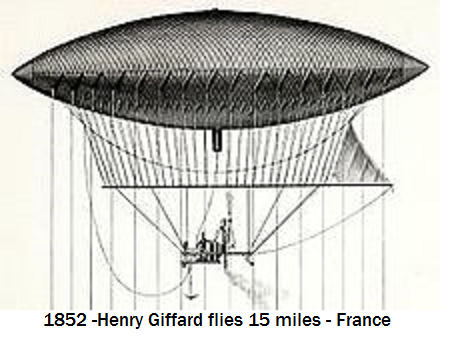
img source
The first Zeppelin airship 1898
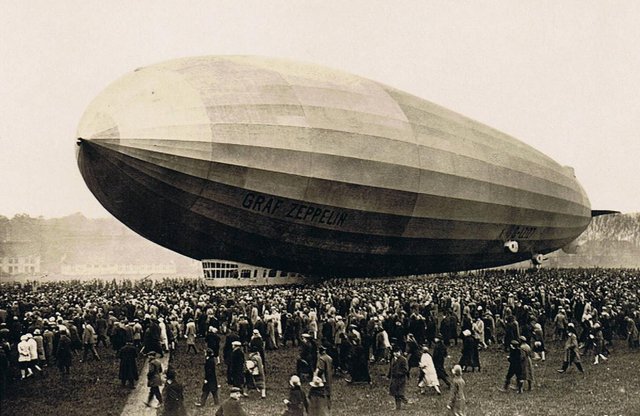
img source
The Hindenberg

img source
Almost all airships used today are much smaller and are called blimps. Early airships dropped ballast to make the aircraft rise, and they released small amounts of gas to descend. This procedure was later replaced by the addition of vertical and horizontal fins on the dirigibles.
An example of a modern blimp

img source
Types of Airships
Larger gas envelopes were cigar shaped to reduce wind resistance. Two new types of gas bags which came into use were called non-rigid and rigid. The non-rigid type has several smaller balloons inside the large shell or envelope. The rigid type has a framework over which the gas envelope is placed. The envelope retains its shape, even without gas in it.
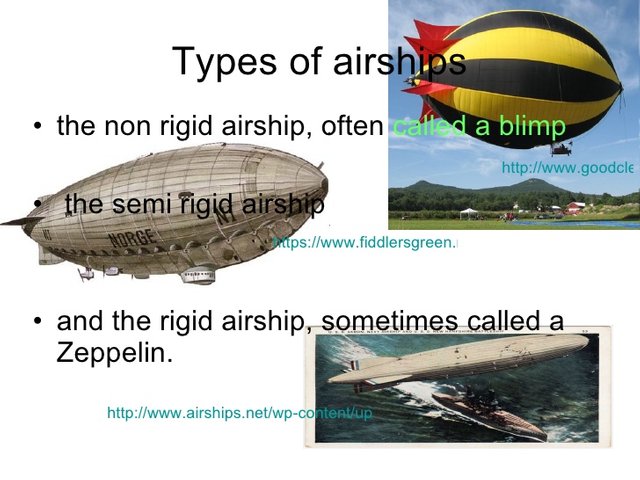
img source
Germany led the world in construction of dirigibles. Eighty-eight rigid Zeppelins were built and flown during World War I. Many could carry loads of over 40 tons at speeds of 80 miles per hour. Great Britain and France produced smaller non-rigid airships called blimps which were used primarily for coastal patrol and submarine spotting.
The commercial future of the giant German zeppelins looked promising following World War I. A series of crashes due to limitations of structural materials, weather forcasting, and the use of dangerous hydrogen gas was climaxed on May 6, 1937, with the spectacular burning of the Hindenburg. The decline of the use of the airship was also brought about by the rapid development of the airplane. Even though the technical problems of the airship could be solved today, the dirigible remains obsolete.
The Hindenburg disaster 1937

img source
The ZPG-3W, the largest non-rigid airship ever constructed. It was useful for carrying a gigantic radar antenna but it crashed after being in service in a few years.

img source
A modern airship, Zeppelin NT D-LZZF in 2010
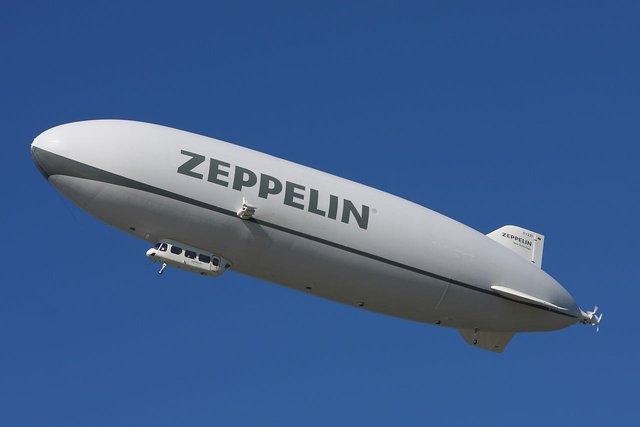
img source
The pros and cons of an airship
Compared to a heavier-than-air crafts like an airplane is that the static lift of an airship is sufficient and it's coming from lifting gas and doesn't require engine power. In addition, the engines in an airship produces dynamic lift to allow an airship to takeoff heavy from runways as similar to the fixed-wing or rotary aircraft. The main disadvantage of it is the size. It has a very large reference area and comparatively large drag coefficient compared to airplanes and helicopters. The larger the aircraft, the problems of ground-handling increase. Early airships could not survive combat situations and intercontinental over-the-water flights. However later on, high-altitude airships were made after the World War II to survive some airplanes and missile threats.
Nowadays, helium is commonly used as an airship's lifting gas so it has no fire risk. Modern airships have a natural buoyancy and special design that offers a virtually zero catastrophic failure mode. Series of vulnerability tests are conducted and found out that maintaining gas pressure at only 1-2% above the surrounding air pressure caused the vehicle to be highly tolerant to physical damage or to attack by small-arms fire or missiles. Even they fired high velocity bullets on it, the modern airship was able to complete its mission and within two hours able to return to the base.
Yey thank you very much @steemiteducation!
Ohhh interesting history! That's a cool minion blimp! :D
I hope to see a blimp in person in the future.
You can invite your friends or parents to the yearly "hot-air balloon festival" in clark Pampanga. Every february or March yun ang entrance lng about 500 per person. Airshows, paragliding, hotair balloon, army exhibits tsaka blimps (w fee).